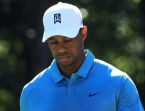Welcome to Earl's Golf Blog
October 12, 2016
What to read into the Tiger Woods withdrawal
 Tomorrow would have been an exciting day with the return of Tiger Woods to the PGA Tour. However, he withdrew two days ago, stating that his game was not ready for competition at a PGA Tour level. He used the word vulnerable in describing his game, which leads to all sorts of interpretations and speculations. The past season was thrilling and suspenseful, but it was missing the presence of its’ biggest star. Now it is really time to question if Tiger can come back at all.
Tomorrow would have been an exciting day with the return of Tiger Woods to the PGA Tour. However, he withdrew two days ago, stating that his game was not ready for competition at a PGA Tour level. He used the word vulnerable in describing his game, which leads to all sorts of interpretations and speculations. The past season was thrilling and suspenseful, but it was missing the presence of its’ biggest star. Now it is really time to question if Tiger can come back at all.
Pride is an essential element of a person’s psychological makeup. Some are more prideful than others. Tiger’s pride or ego, by the pure nature of his accomplishments, is very large. His very being is associated with being the best golfer on the planet. He built an impenetrable fortress around his personal invincibility. In his prime, he intimidated the best players in the world. He was so strong mentally that even when he was not at his physical best, he was still better than anyone else. His personal life was guarded, but from the outside he had it all. All the wealth needed, gorgeous home, beautiful wife, lovely children, and seemingly everything one could ask for. However, that wasn’t enough and with the marital breakup and scandals that followed, we realized he wasn’t perfect. It was the first crack in his invincibility. His golf game suffered initially, but recovered to the point that he again was the PGA Tour Player of the Year in 2013with five wins. However, he was failing to close wins in major championships, something that he places extreme importance upon. It is now over eight years since his last major championship at Torrey Pines at the US Open.
So what is wrong with Tiger’s game? From reports, he is healthy and is striking the ball wonderfully. But to be on top of the golf world, you need an exceptional short game. In 2015 we saw Tiger struggling with his wedge game. He chunked and skulled shots that he never did before. He then went to putting or using a utility wood to roll the ball onto the green. Those methods will eliminate the big mistake, but will not consistently get the ball close enough to prevent losing shots. Many believe that Tiger has developed a case of the “Yips”. To a golfer, that is like finding out you have a terminal disease. It is impossible to be one of the best players in the world without an exceptional wedge game. If the “vulnerability” in Tiger’s game is the “Yips”, then we realistically can’t expect to see the Tiger of old.
What are the “Yips”? My definition is a mental and muscle disorder that affects fine motor skills when preforming repeatable precise movements. Golfers are not the only people that have experienced this malady. Athletes in baseball, basketball, tennis, bowlers, place kickers in football and others have suffered from this condition. Surgeons and musicians are quite susceptible to acquiring these involuntary muscle movements. The scientific community, at this time, has no known cure or treatment. That said, there are many cases of golfers and others who have overcome the yips. Bernhard Langer, two time Masters champion and current number one ranked senior PGA player, has overcome the yips in his putting on numerous occasions. In each instance he changed either his equipment, technique, or putting grip. In a conversation I had with Dale Douglass, a PGA Tour winner and 11 time winner on the PGA Champions Tour, he speculated that each person has just so many good strokes or repetitions before the brain refuses to control that movement anymore. At that time, he said, it is time to use a different putter, style, or approach to rejuvenate and refresh the brain. He believed that was the reason that many had immediate success with the long putter. The brain is a very adaptable organ. Neuroplasticity, the brains ability to allow neurons to form new conduits to circumvent damaged or non-working pathways, is possibly that answer to cure the yips. However the rewiring or retraining of the brain takes time and doesn’t guarantee that the new connections will function as well as the original.
Earl Woods employed a sports psychologist, Dr. Jay Brunza, to work with Tiger as a junior and he caddied for Tiger in at least one of his USGA Junior Championship wins. Tiger and Earl have credited Brunza with giving Tiger the mental tools to handle the intense pressure and preform to his best. Now he is facing a different challenge, one that he has not faced before or has the tools to overcome. I believe Tiger is dealing with this problem with intense practice and that his pure “will” will overcome his short game problems. Sean Foley convinced Tiger to change his chipping and pitching technique. Tiger had used the same method since he was a young kid and arguably was the best in the world. Why change what was working so well? To make that change required a lot of work and a change in the wiring of the brain. The short game is a right-brain feel oriented technique. Tiger made it a mechanical change and although it worked OK for a while, it started to show signs of weakness. Because the neurological pathways had been changed, Tiger wasn’t able to reconnect to his old thought patterns and instinct. Right now I think he is in a “nowhere zone” between the styles and thought processes. I’m not sure that that he can eliminate and disconnect the Sean Foley inferior pitching motion from his mental inventory.
All shots, whether good or bad, are stored in the brain where specific stimuli will trigger their reappearance. Now Tiger has built up a number of bad short game memories that are very painful. They greatly affect his pride and ego. I believe Tiger was not willing to put his vulnerability on display and embarrass himself. However, he has to put his shame or vulnerability on display if he is going to be able to compete at a high level again. My advice to Tiger would be to swallow your pride and renew your professional relationship with Dr. Brunza or similar expert and learn the causes that produced the situation he finds himself. The golfing public wants Tiger back, but if his mental toughness isn’t back then he shouldn’t make a comeback until he is ready for the consequences, both good and bad.



